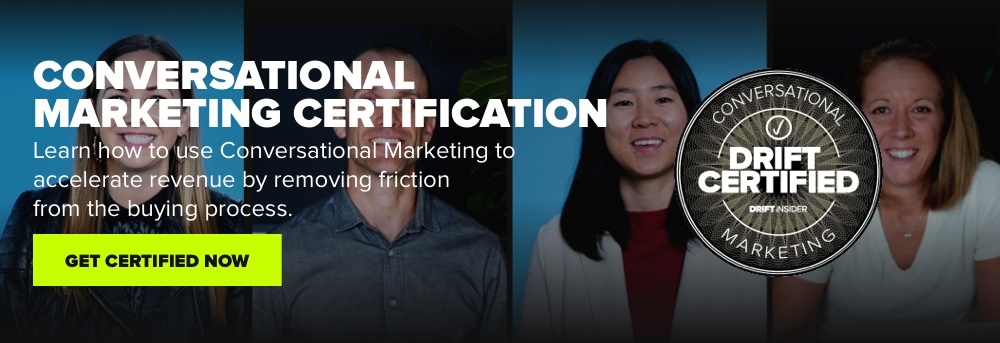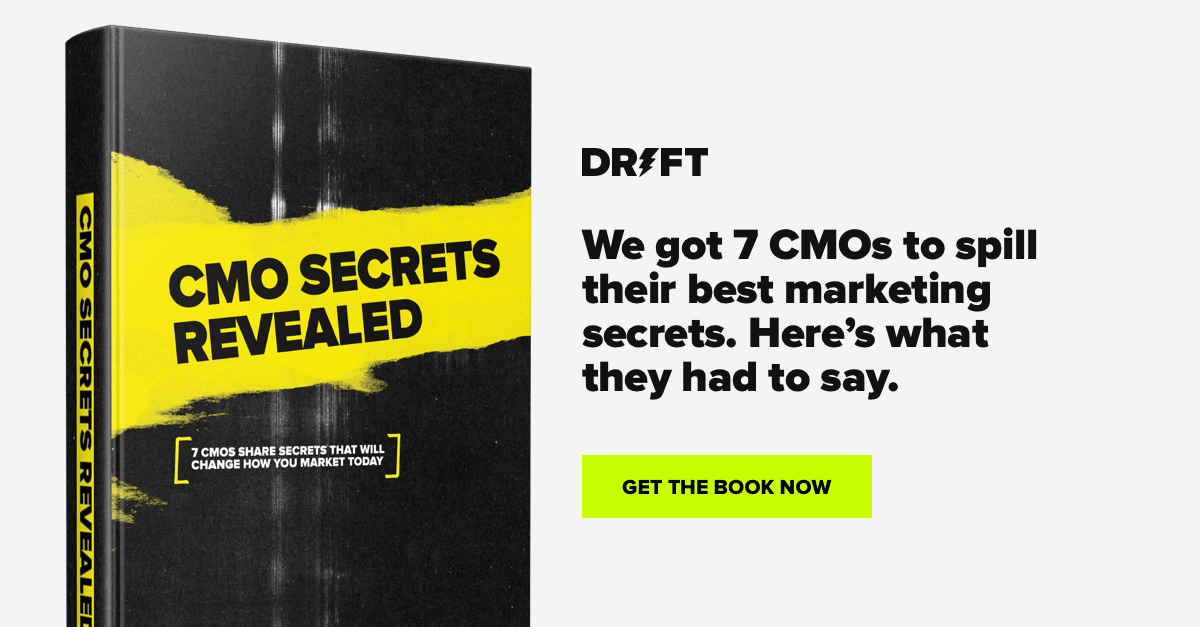While some content teams are frantically trying to figure out how to use content to generate leads, leads, leads (and more leads), others are focused on how to make their content so valuable that the content sells itself and creates fans and customers.
No one wants to consume content that’s not helpful or entertaining. Content is your chance to build trust and credibility – so don’t blow it.
Great content is actionable, informative, transformative, and maybe a little humorous too. The perceived value of the content should be so high that your audience would be willing to pay for it.
My advice? Think like a product manager. The secret is to get inside the head of what really great product managers do, so you can create content that truly is a product. Here’s how.
Start with a Solid Story, POV, and Set of Values
First things first: your brand is everything, but your brand isn’t just your logo. It’s the foundation of what you believe in.
What stake can you lay in the ground? What observation can you make about how your industry is changing, or how it should change?
At Drift, we started with Conversational Marketing as our core brand message (and category creator), and now we’ve taken it a step further with Revenue Acceleration, which is the combination of Conversational Marketing and Conversational Sales.
When you have a solid brand foundation in place, it’s much easier to know what sort of content products will support it.
“Products are made in a factory, but brands are created in the mind.”
Without this piece in place, it’s hard to create content that feels truly special.
Know Who You Want Your Brand Story to Resonate With
You’ve heard it said before, and that’s because it’s true: figure out the who before the what. Who are you going to get your brand story and values in front of? Is it software founders, or corporate travel managers, or customer success professionals?
Don’t do any brainstorming or competitor research until you’re crystal clear on who your ideal customer profile and buyer personas are. This way, you can avoid any tired content marketing advice and dig deep into what your audience wants and needs.
“The aim of marketing is to know and understand the customer so well the product or service fits him and sells itself.”
Become the expert on what they care about, and you’ll already be ahead of the game, by a lot.
Use JTBD to Uncover Customer Pain Points and Content Solutions
Product managers are big on acronyms, so here’s one to try out. The Jobs to Be Done (JTBD) framework to decide what your content products should actually be.
Your content product should solve a job to be done. When someone buys a fancy camera, it’s not because they want to buy a fancy camera. They want to be a better photographer and take incredible photos of their family.
“Upgrade your user, not your product. Don’t build better cameras – build better photographers.”
How can your content “upgrade your user?” What problems can you solve that won’t just be nice to fix, but will transform your audience into a better version of themselves? The answer will inform an entire suite of content products.
Build a Content Experience That Sparks Conversation and Community
The communities you create for your audience are also like a product. Imagine a Slack or Facebook group full of kind, knowledgeable professionals who were happy to share their hard-earned advice.
A community doesn’t have to be a Facebook group, of course. Sometimes those feel like a distraction, and not a valuable one.
Drift Insider is our community and learning platform that houses all of the ways that our audience can become a deeper part of our community. Our audience wants to grow in their careers, get results, and become better sellers and marketers.
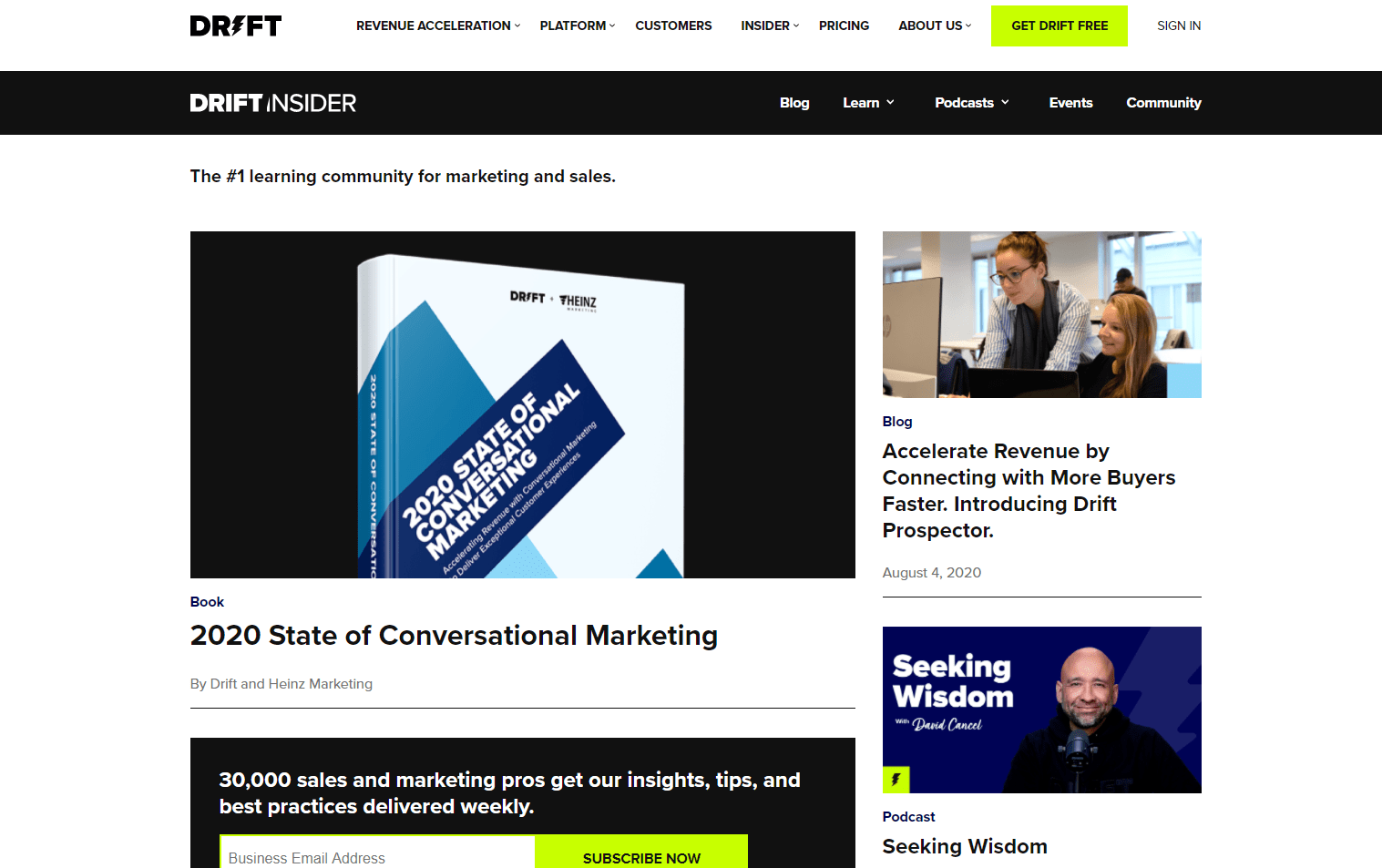
Drift Insider is a place where top-tier sales and marketing professionals can always turn to solve a big problem or learn something new. To keep it fresh and authoritative, we enlist experts from our own internal teams and our customers.
Figure Out the Unique Value Your Content Offers
If your content is going to be a product, it better provide some sort of value or solve a problem. Always begin with what the value is so your content product has purpose and direction.
Acciyo is a Chrome extension that makes it easy to unlock the full history of a news story, so you don’t feel like you’re in the dark when you’re reading about an event you hadn’t heard of before.
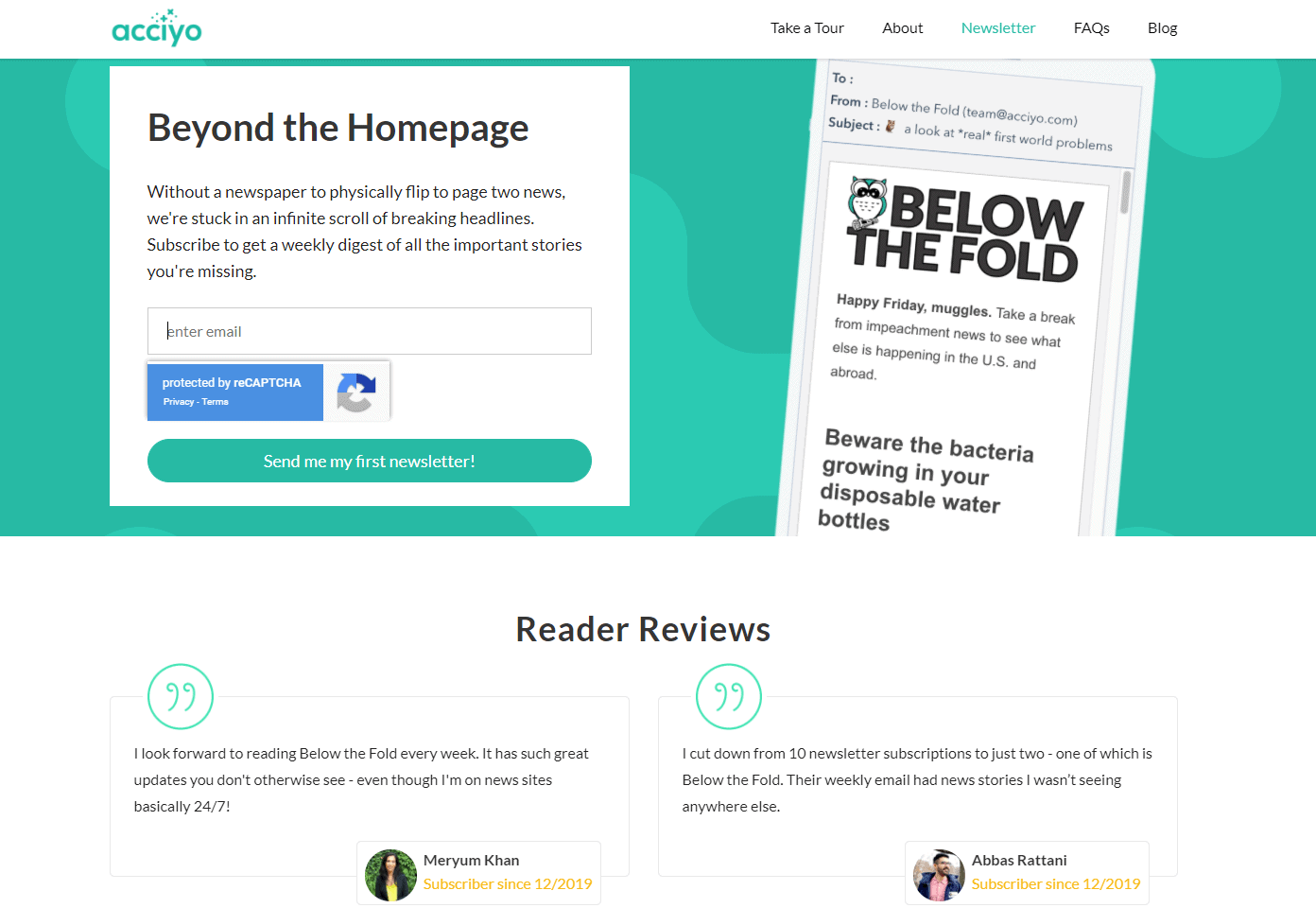
The company put out a newsletter to keep users engaged called Below the Fold, a daily selection of headlines that aren’t getting the attention they deserve. After receiving great feedback from their users, they decided to open it up to their entire audience and turned it into an acquisition channel.
Create Content with a Strong Point of View
Remember that strong brand foundation? It comes into play here. Once you know what your company believes (what stake you can put in the ground), it becomes a lot easier to know what pieces of content to create that support your position.
For example, HubSpot has hundreds of pieces of content on inbound marketing, because that’s their thing.
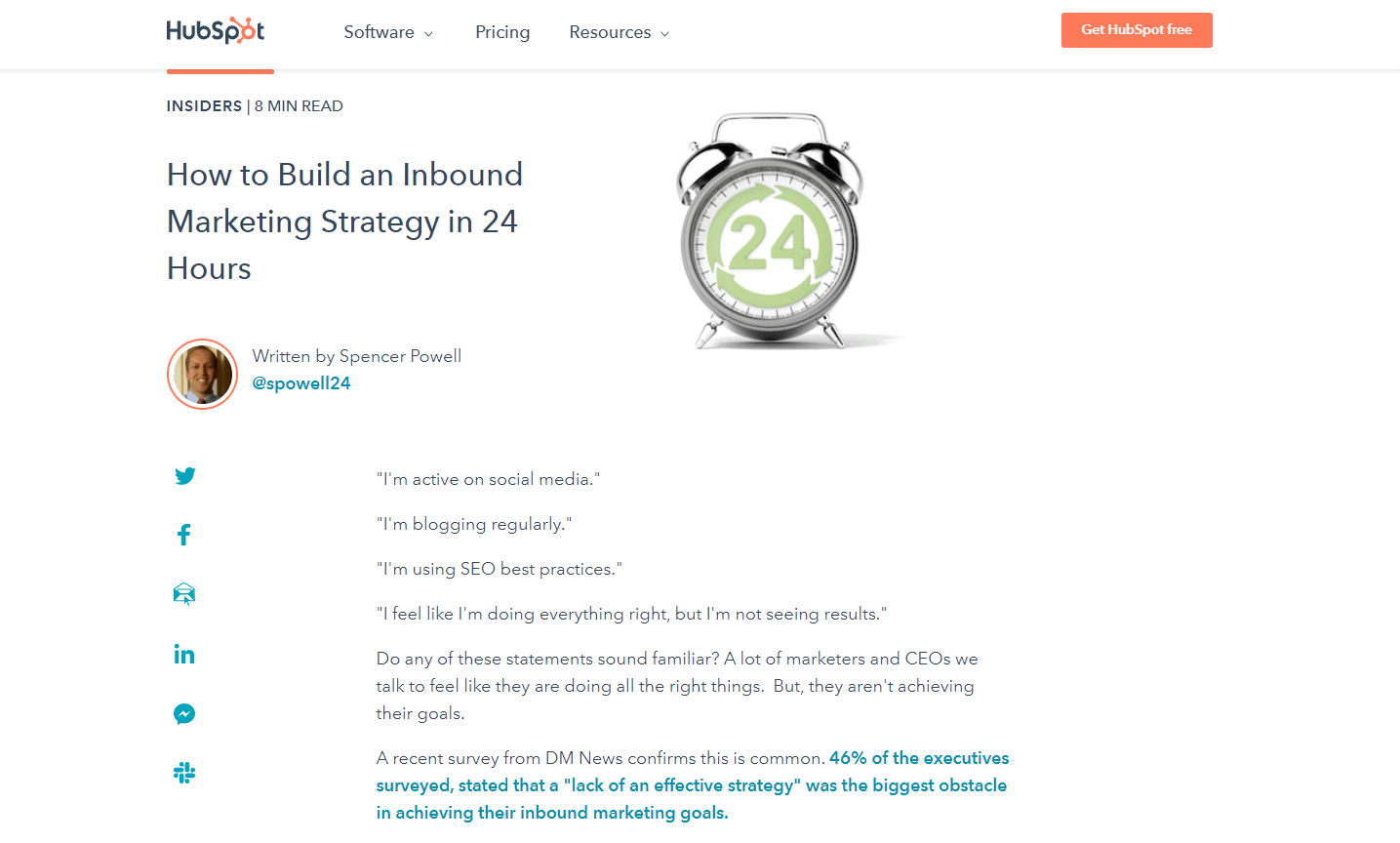
To really claim your category, create strong, controversial content. Saying something like “you can create a content strategy in 24 hours” might not seem controversial, but it is, because it’s a concept that people either love or hate.
Not everyone will agree with you – and that’s a good thing.
Go for an Emotional Response
While for the most part in B2B we focus on solving problems for our audience, it’s smart to release some entertainment-style products as well. Your professional audience wants the occasional surprise, laugh, or something that just makes them feel good.
TravelPerk really impressed their audience and got a ton of kudos on social media when they profiled a startup that provides shippable freezing containers for breastfeeding moms who travel for business.
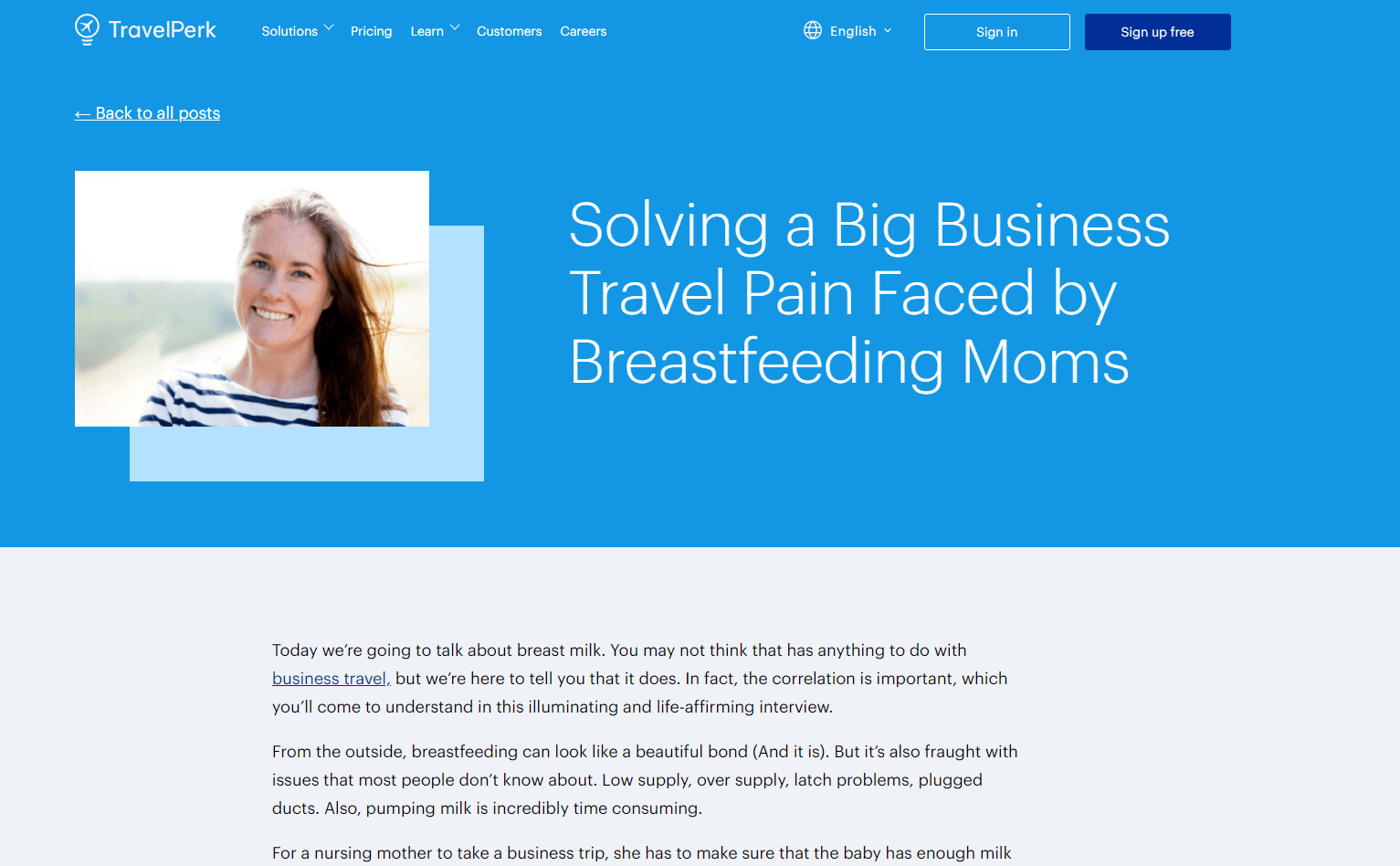
If all you’re producing is basic tutorials, you’re missing out on a huge opportunity to create an emotional connection with your audience.
Profile your customers and other business owners or leaders that your audience cares about. When you couple valuable lessons with emotional stories, you’ve struck gold.
Distribute Content Like a Product
Think about how you’re going to distribute your content before you create it. When I say “distribute” I’m not just talking about posting it on social media after you publish it.
I’m talking about baking distribution into your content creation. For example, one of the things we love to do at Drift is to create episodic content. With blog posts, your audience doesn’t necessarily try to consume everything in a series, but with podcasts and videos, they’re much more likely to come back for more.
We often brand our content as a show, with separate seasons. One of my favorite examples is our show #NoFilter that we publish on Drift Insider. #NoFilter is an interview series where marketing and sales execs speak candidly about their career paths, failures and successes, tips and tricks, and lessons learned.
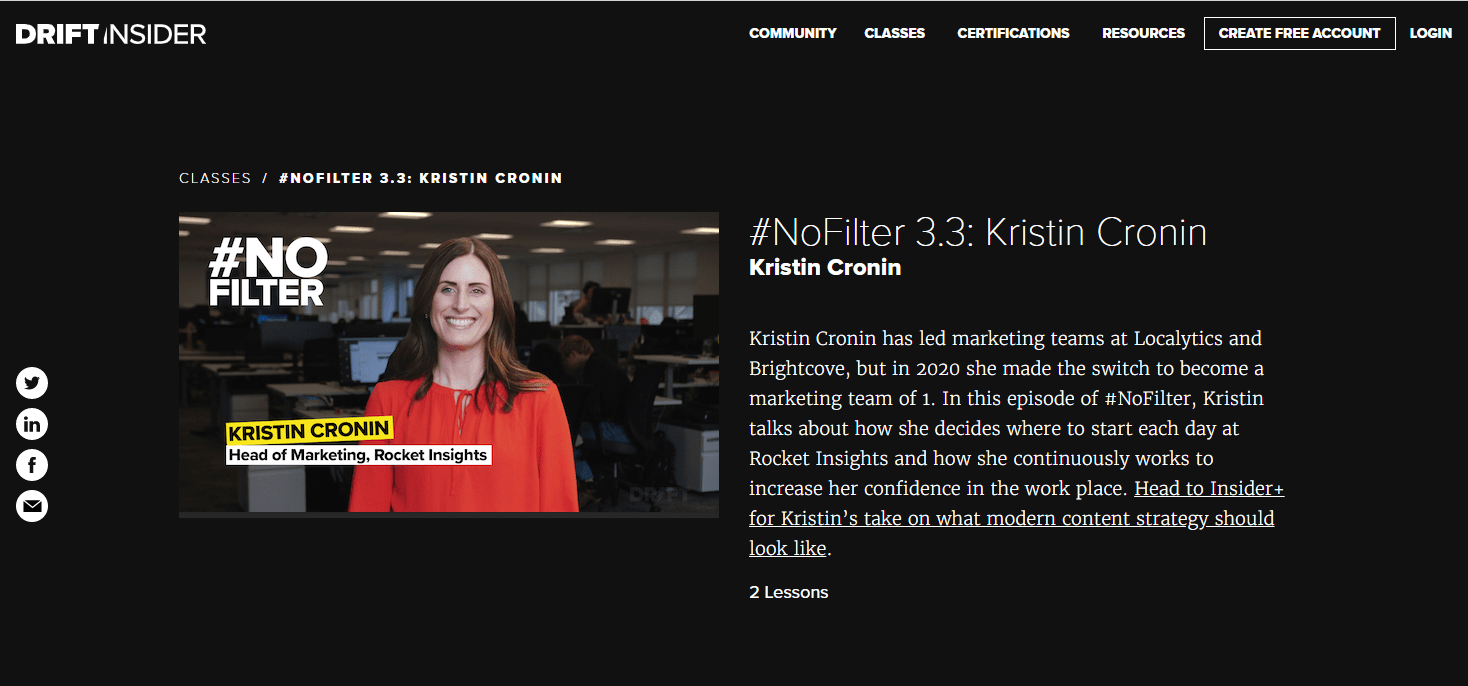
Episodic content like #NoFilter helps you build anticipation, deliver value, and produce content that keeps your audience coming back for more.
Manage Your Email Subscribers with as Much Care as Your Paying Customers
A healthy email database means that you don’t have a vanity list, but rather a group of engaged potential buyers.
Churn is a reality. Of course, we want it to stay within certain parameters, but it would be a bit aggressive to try to reduce churn of all kinds. Hear me out. Would you force customers who couldn’t get value from your product to keep signing up year after year? No.
You shouldn’t assume that everyone wants or needs your content. When you treat your content like a product, you understand that sometimes you need to let people go.
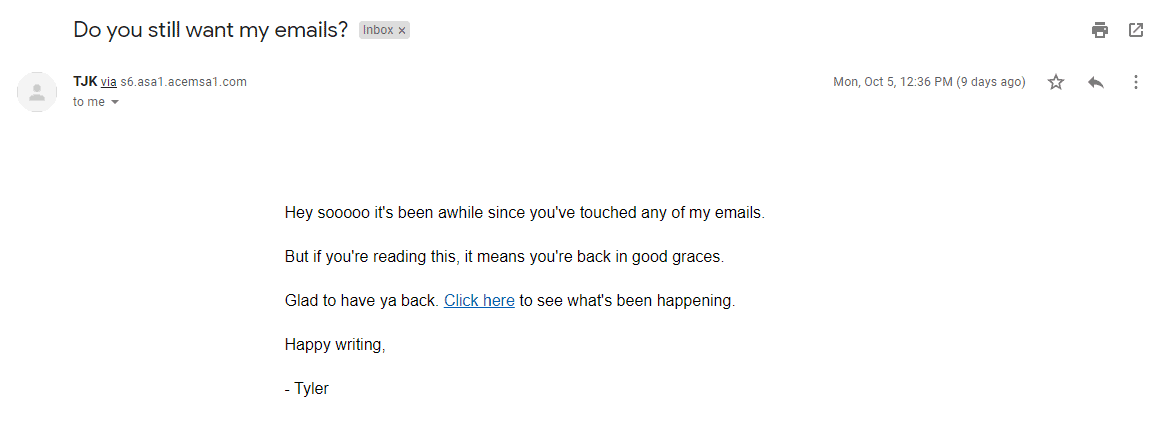
Allow churn, don’t freak about normal levels, and regularly run unsubscribe campaigns to people who haven’t opened your emails in the past four months.
Have a Plan for Keeping People on Your Email List
Yes, I just said that churn is okay, and it is. But you do want to keep the right people on your email list. Something we do here at Drift is to segment people into different lists from day one.
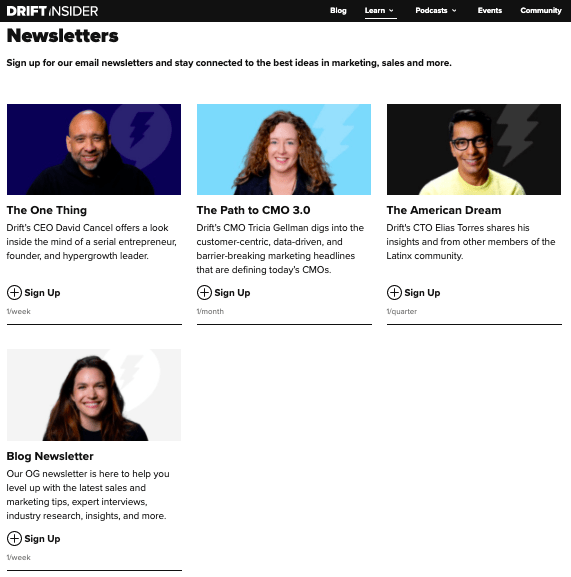 We have our CEO’s newsletter, our CMO’s newsletter, our CTO’s newsletter, and our blog newsletter.
We have our CEO’s newsletter, our CMO’s newsletter, our CTO’s newsletter, and our blog newsletter.
Different pieces of content will include a CTA to subscribe to a newsletter, or to the page where you can choose one or all of them.
To keep people on your lists, make sure you’re continuing to deliver value. Also, have an onboarding sequence that you take just as much care to craft as you would an onboarding flow for a new customer.
Create Ebooks That Are Worthy of Publication
Could the title of your ebook be the title of a book? Is it something people would pay for? If so, it’s worthy of giving away to your audience for free.
Gong creates very actionable ebooks, like 10 Tips for Deal-Closing Video Calls and Words That Sell (everyday words and phrases you should use in sales calls).
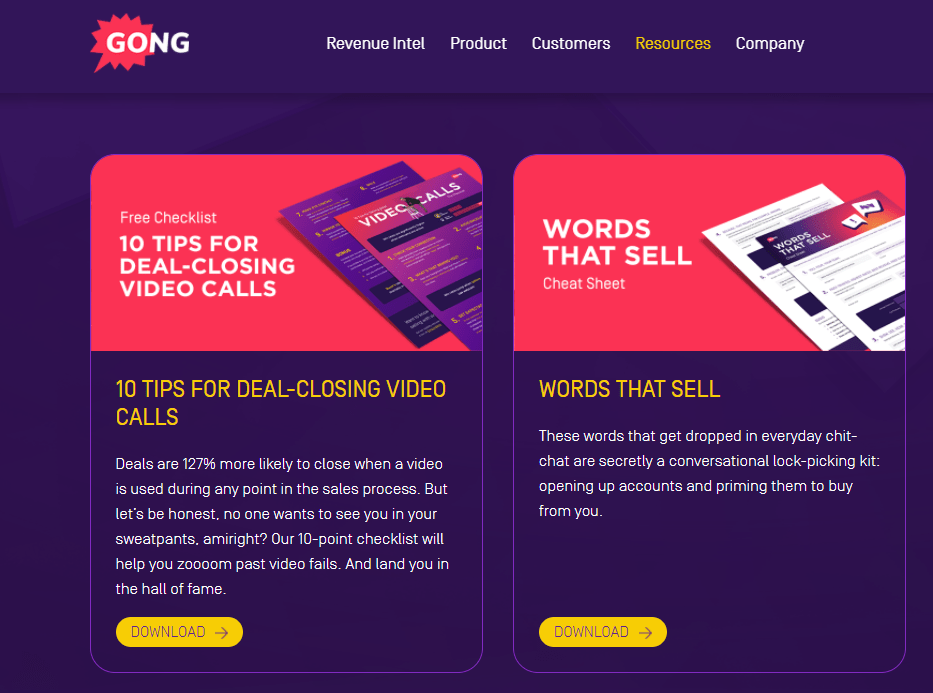
Meanwhile, Clari puts out comprehensive guides with as much high-value information as you’d hope to find in a paid course or program.
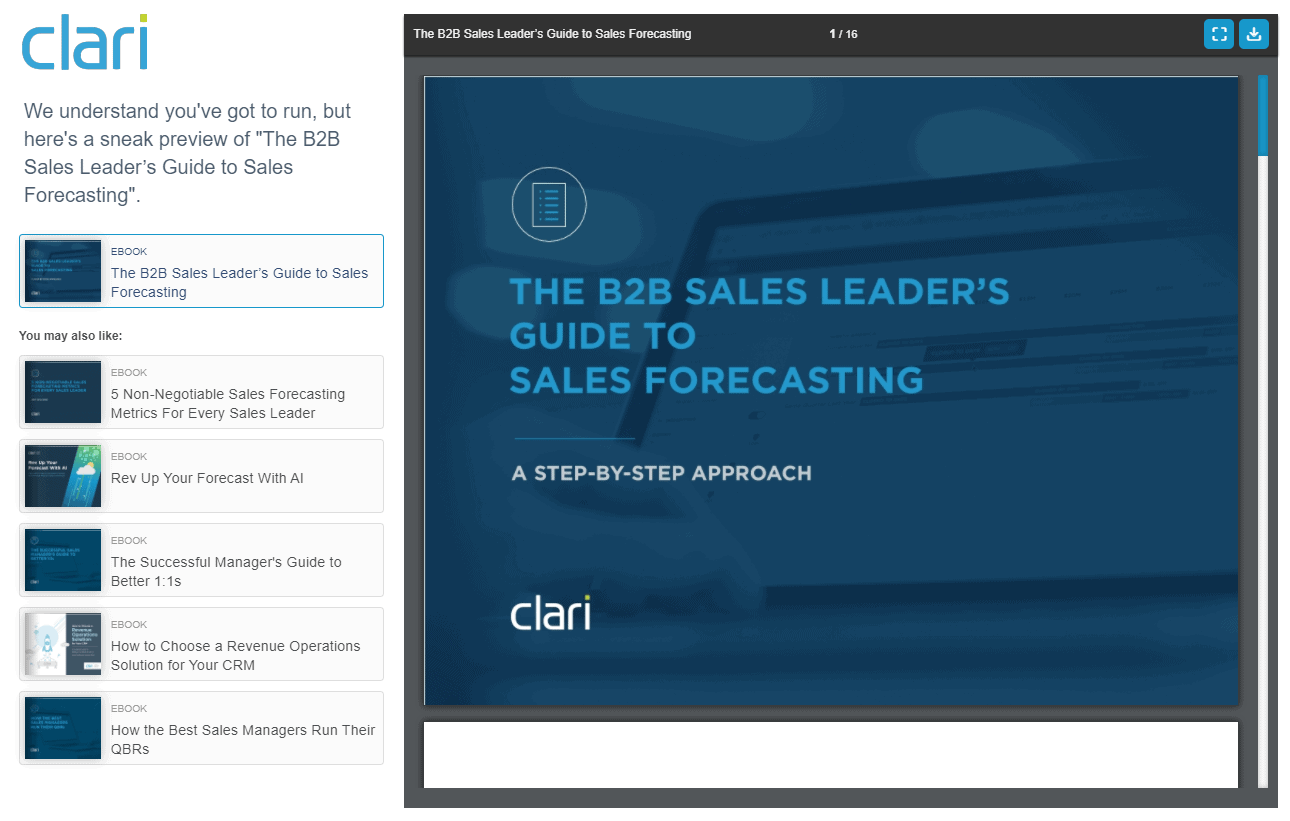
Check out the B2B Sales Leader’s Guide to Sales Forecasting here.
Offer Your Ideal Audience a Way to Upskill
Another thing people pay for? Courses and certifications. The best way to forge a deep relationship with a current customer is to help you contact get internal recognition or even a promotion.
You can help your target audience upskill too, even if they aren’t a current customer. And when they’re ready to buy a solution like yours, they’ll remember everything your company did for them.
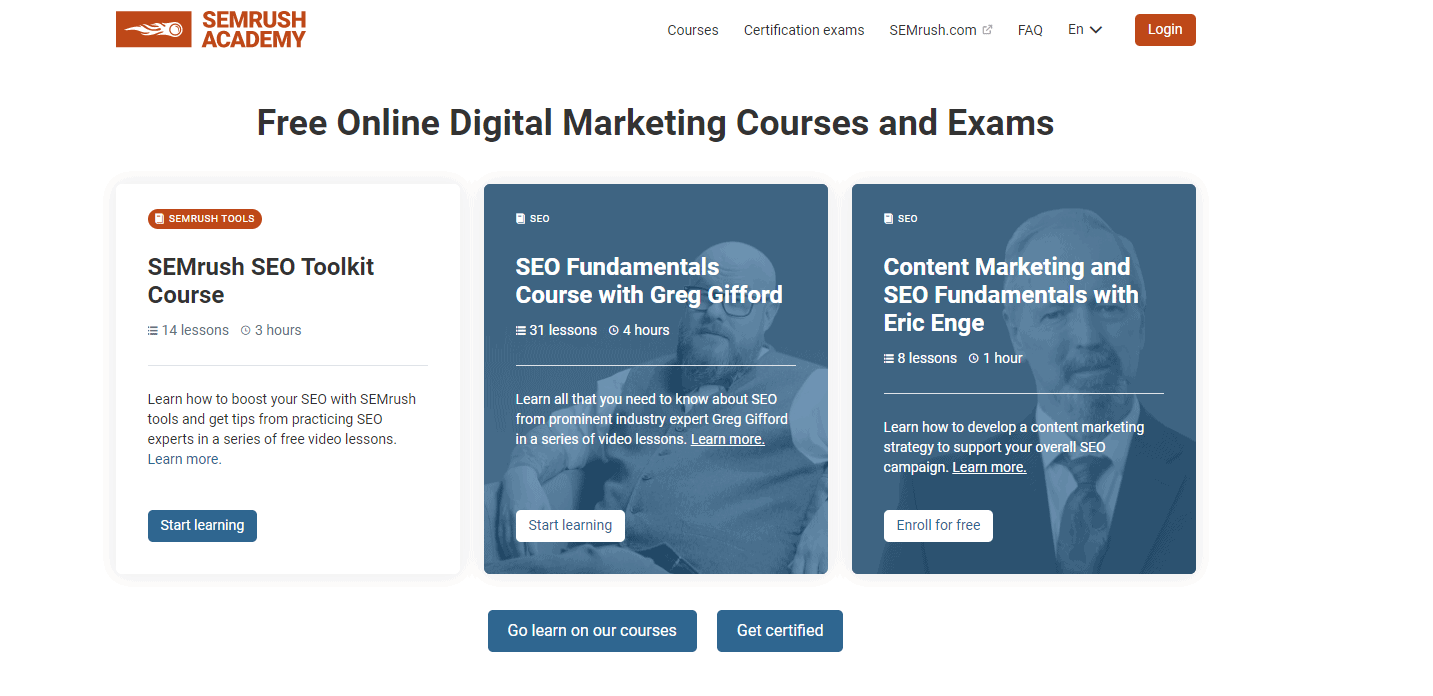
The SEMrush Academy is as good as any paid program.
I’ve also got to mention Drift’s completely revamped Conversational Marketing Certification – with all new video lessons, class content, knowledge checks, and more.
Don’t Expect Your Audience to Know What Your Content Products Should Be
What sort of content product should your company produce? Don’t expect your audience to tell you point-blank. You’re the product innovator, after all.
Instead, discover their pain points by interviewing them or listening to call recordings from your customer success or sales teams. It’s typically the most useful to internally determine what the content should be about and to get customer feedback on length and format (not topics).
“We see our customers as invited guests to a party, and we are the hosts.”
Bringing It All Together
Above all, content shouldn’t feel like a chore when you’re creating it. It should feel fun and natural. So if you or your team who is creating the content doesn’t feel that enthusiasm, take a pause and make sure you’re creating the right things.





